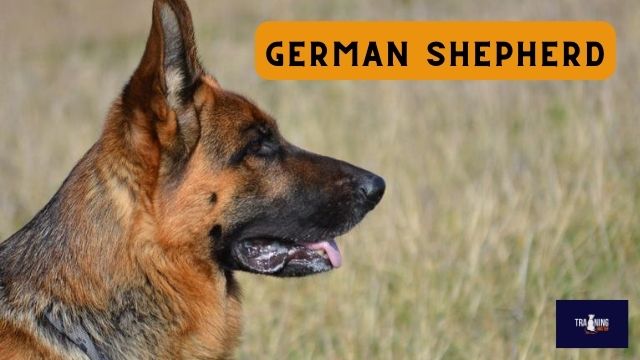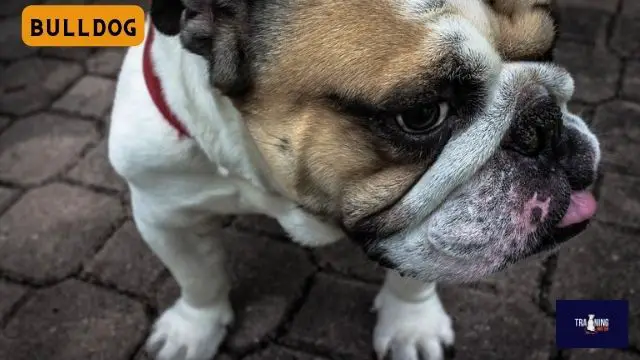
We know that some dogs are more sought after than others. However, some breeds of dogs are so high in popularity that they end up being overbred at the expense of their health.
Sometimes, attractive physical traits are pushed to the extreme, such as with the Pug or “teacup” dogs with dwarfism. Other times, dogs who carry health issues are bred anyway.
All dogs should have a full health clearance from the vet before being used to breed. That said some dogs are more prone to health issues than others. So, what are some dog breeds with the most health issues?
Pug

First of all, the obvious Pug. Most of us have heard of the numerous problems some Pugs have.
For example, their short muzzles and flat faces make breathing difficult and noisy under normal circumstances.
This brachycephalic obstructive airway syndrome also makes heat stroke or fainting more likely.
And then there’s the Pug’s large, buggy eyes. These prominent eyes are more prone to eye infections and ulcers.
On top of this, the Pug’s nose folds can harbor bacteria too. But thankfully, these days, breeders are making an effort to improve the Pug’s health.
Crossing the Pug with dogs like the Jack Russell helps to introduce better physical traits into the Pug’s gene pool. It also creates interesting new breeds!

Most people think of the Dachshund as a generally healthy breed. Indeed, the Dachshund is an athletic and long-lived hound with the potential to live for 13 years. However, some Dachshunds are prone to certain physical health problems.
With their extremely long body and short legs, sausage dogs are predisposed to developing a condition called Intervertebral Disc Disease (IVDD) – they have a 10 to 12 times higher risk.
Between 5 to 7 years old, you may notice your Dachshund struggling to walk properly.
Again, breeders are working to eliminate this risk, and surgery can fix this problem.
German Shepherd

You might be surprised that the strong, tough German Shepherd has any health risks. But there are a few.
Careful breeding aims to address the German Shepherd’s propensity towards arthritis, hip dysplasia and lameness. Indeed, many large dog breeds are prone to physical problems stemming from their strength and heaviness.
French Bulldog

Just like the Pug, selective breeding has also caused problems for the French Bulldog. As a result, thinner nostrils and smaller airways are getting more common among French Bulldogs.
Unfortunately, this means respiratory issues in French Bulldogs are growing common, too.
Cavalier King Charles Spaniel

The adorable King Charles Cavalier has no apparent physical abnormalities. Their face is flat but nowhere near as flat as a Pug’s. They may have floppy ears, but not like a Bassett Hound.
In this case, the King Charles’ skull is the problem. Without veterinary screening of the parent pooches, a Cavalier King Charles Spaniel can inherit syringomyelia.
This is where their skull is too small to accommodate their brain. Syringomyelia then causes cysts to develop on a Cavalier’s spinal cord, which is very uncomfortable for an affected dog.
Rottweiler

You might assume this tough pooch is infallible. However, it turns out the Rottweiler is prone to several health issues.
Like all big dogs, skeletal issues like hip dysplasia are a concern. This is where the head of their femur doesn’t fit well into their hip socket. Then there’s elbow dysplasia and osteochondrosis, too.
Rottweilers can also suffer from eye problems like progressive retinal atrophy, eyelid deformities, cataracts and more. One other concern is epilepsy. These are a few reasons why proper screening before breeding is so important.
Saint Bernard

Another large breed, this extremely affectionate rescue dog from the Alps, is predisposed towards bone cancers and cardiac problems.
This giant pooch is a great family dog and loves spending time with people, but it is prone to all the typical large dog problems like bloat and hip dysplasia.
On top of this, their giant size makes medical care for a Saint Bernard dog even more expensive.
Basset Hound

The Basset Hound is one iconic pooch with a droopy face and ears. However, this hound truly is unique with its velvet-soft ears, perpetually mournful eyes, and wrinkled brow.
Despite their tiny legs, the Basset Hound is quite a big dog, weighing 65 pounds max. And yet, this fearless hare-hunter is prone to several health conditions.
Allergies to food, mold, pollen or dust mites are common among Basset Hounds and are exacerbated by the fact that this hound’s heavy skin folds and floppy ears retain dust and food particles.
Basset Hounds are also prone to heart conditions like dilated cardiomyopathy, stomach issues like bloat, and the blood clotting problem Von Willebrand’s disease.
Labrador Retriever

Everyone’s favorite hardy family pet, the Labrador Retriever, is the last dog you’d expect to suffer from health issues. Indeed, responsible breeding has reduced the likelihood of most of these issues.
Labradors who carry hereditary myopathy, heart disorders, inheritable eye conditions and other hereditary conditions will not be bred.
However, elbow and hip dysplasia, certain types of cancer and exercise-induced collapse are still problems you need to look out for with a Labrador Retriever.
Newfoundland

This big working dog is a powerhouse. The dignified Newfie is calm, intelligent and loving. Their webbed paws and thick double coat make them ideal for water rescue or just messing around in the pool with their family.
Again, hip dysplasia, elbow dysplasia and other typical large dog health concerns apply. Minor issues like cataracts and the bleeding problem Von Willebrand’s disease are on the cards too.
However, two other significant concerns with the Newfoundland are subvalvular aortic stenosis and dilated cardiomyopathy.
Bulldog

The robust Bulldog is probably not the first dog most people think of when they think of dogs with health problems.
That said when you think of their unusual skull shape and wrinkly skin, it’s easy to tell that Bulldogs have been bred to an extreme.
Much like the Pug, the Bulldog’s short muscle, protruding underbite and robust, stocky body has been linked to several health conditions like skin and ear problems and disorders, as well as breathing problems.
Bulldogs also have issues with regulating their temperature, leading to overheating. On top of this, hip dysplasia is also a concern thanks to the Bulldog’s low-slung body and broad shoulders.
But, again, much like the Pug, efforts to improve the Bulldog’s health through improved breeding are succeeding.


